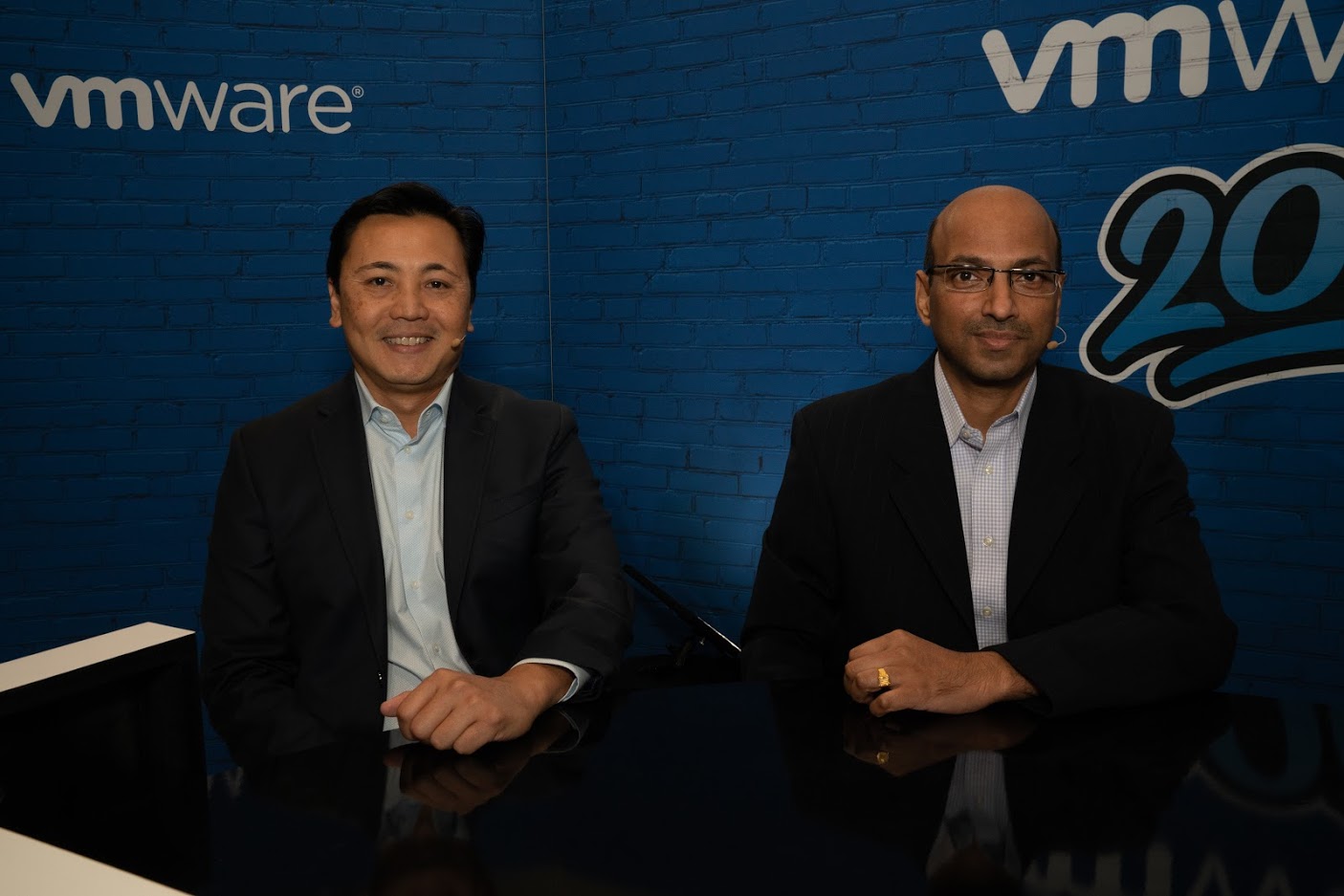 INFRA
INFRA
 INFRA
INFRA
 INFRA
INFRA
We hear a lot about rapid data growth testing the capacity of enterprise storage systems. The tally of software applications is also climbing toward the ceiling. How will we accommodate them without crowding our data centers with stack upon stack of storage infrastructure?
The number of enterprise apps will climb from 352 million to 792 million in three years, according to Chhandomay Mandal (pictured, right), director of solutions and vertical marketing at Dell EMC Storage. “As the applications are growing exponentially, we cannot keep growing the infrastructure at that rate,” he said.
The solution is to employ new storage types that pack more into less space, according to Mandal. However, some advanced storage products that achieve this are too pricey for many companies. An end-to-end non-volatile memory express fabric is the most viable option in terms of cost and performance, according to Mandal.
Mandal and David Nguyen (pictured, left), associate project manager at VMware Inc., spoke to Stu Miniman (@stu) host of theCUBE, SiliconANGLE Media’s mobile livestreaming studio, and guest host John Troyer (@jtroyer), chief reckoner at TechReckoning, during the VMworld event in San Francisco. They discussed NVMe’s ability to consolidate apps and bring down latency (see the full interview with transcript here). (* Disclosure below.)
Dell EMC’s PowerMax enterprise storage is essentially NVMe over Fabrics stretching from the server to the storage array, and NVMe solid state drives in the back-end. It creates a platform that allows companies to consolidate applications. It also delivers high performance and low latency; NVMe can have latency in the tenths of microseconds. This is the next best thing to dynamic random-access memory, which is orders of magnitude costlier, according to Mandal.
Its machine-learning engine intelligently tiers workloads. “It is looking at 40 million data sets in real time to decide which set of workloads should go on these [storage class memory] drives, which should go on NVMe SSDs,” Mandal said. “You can choose from diamond, platinum, gold, silver or bronze, and you can constantly get a lot of those 352 million different types of applications on this array, guaranteeing you are going to meet all of your [service-level agreements.”
Trends in data and application growth point toward a need to decouple storage from the host, according to Nguyen.
“What’s preventing us from doing it today is really having the right fabric in place to be able to deliver to that performance level that applications need. NVMe over Fabrics, fiber channel, Ethernet — these are some of the things that we’re looking forward to in the future to make that leap,” Nguyen concluded.
Watch the complete video interview below, and be sure to check out more of SiliconANGLE’s and theCUBE’s coverage of the VMworld event. (* Disclosure: Dell Technologies Inc. sponsored this segment of theCUBE. Neither Dell nor other sponsors have editorial control over content on theCUBE or SiliconANGLE.)
Support our mission to keep content open and free by engaging with theCUBE community. Join theCUBE’s Alumni Trust Network, where technology leaders connect, share intelligence and create opportunities.
Founded by tech visionaries John Furrier and Dave Vellante, SiliconANGLE Media has built a dynamic ecosystem of industry-leading digital media brands that reach 15+ million elite tech professionals. Our new proprietary theCUBE AI Video Cloud is breaking ground in audience interaction, leveraging theCUBEai.com neural network to help technology companies make data-driven decisions and stay at the forefront of industry conversations.